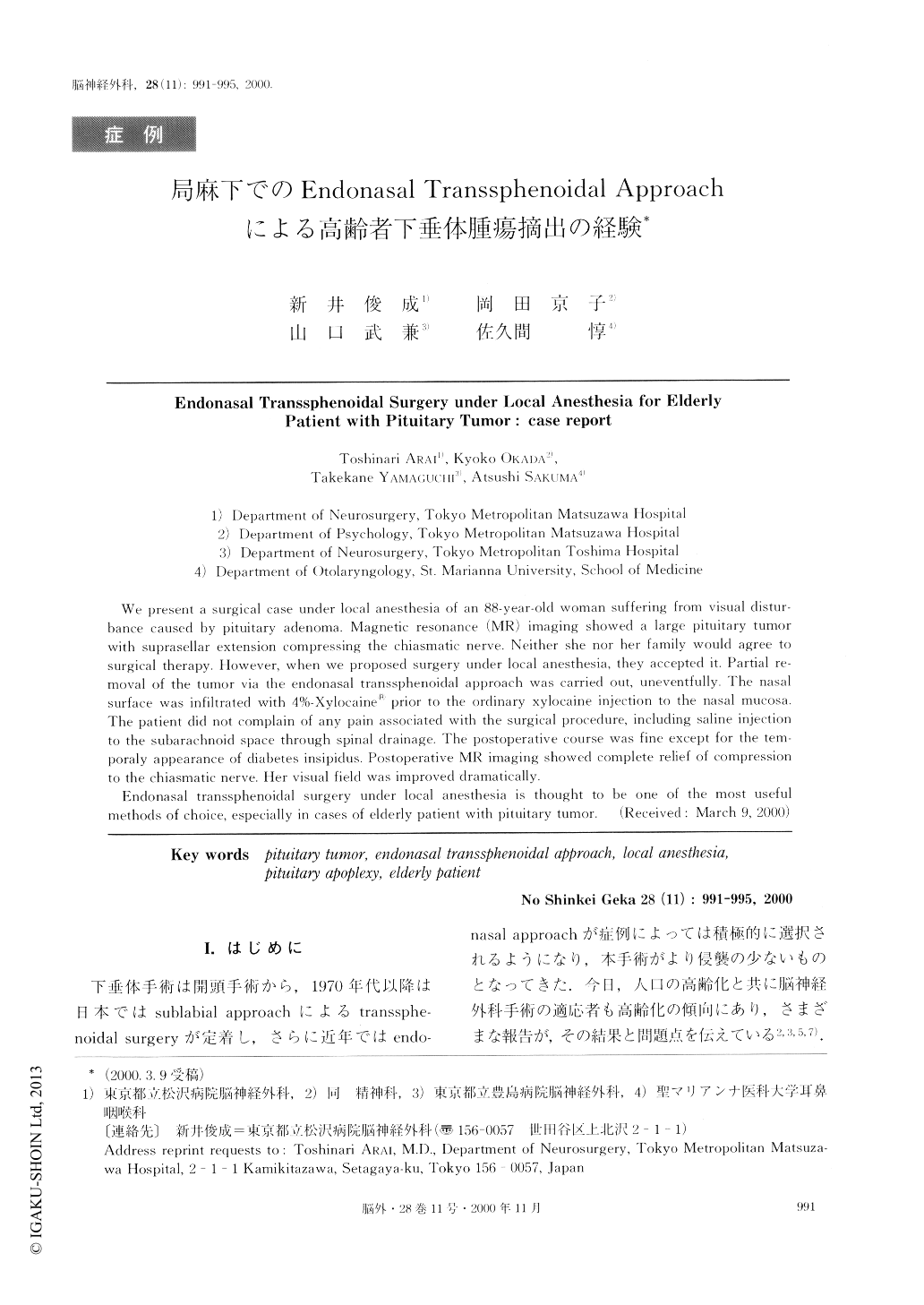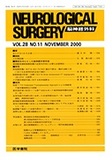Japanese
English
- 有料閲覧
- Abstract 文献概要
- 1ページ目 Look Inside
I.はじめに
下垂体手術は開頭手術から,1970年代以降は日本ではsublabial approachによるtranssphe-noidal surgeryが定着し,さらに近年ではendo-nasal approachが症例によっては積極的に選択されるようになり,本手術がより侵襲の少ないものとなってきた.今日,人口の高齢化と共に脳神経外科手術の適応者も高齢化の傾向にあり,さまざまな報告が,その結果と問題点を伝えている2,3,5,7).
今回われわれは高齢者の下垂体腫瘍に対し,局所麻酔下でのendonasal transsphenoidal ap-proachによる腫瘍摘出を経験したので報告する.
We present a surgical case under local anesthesia of an 88-year-old woman suffering from visual distur-bance caused by pituitary adenoma. Magnetic resonance (MR) imaging showed a large pituitary tumor with suprasellar extension compressing the chiasmatic nerve. Neither she nor her family would agree to surgical therapy. However, when we proposed surgery under local anesthesia, they accepted it. Partial re-moval of the tumor via the endonasal transsphenoidal approach was carried out, uneventfully. The nasal surface was infiltrated with 4%-Xylocaine® prior to the ordinary xylocaine injection to the nasal mucosa.The patient did not complain of any pain associated with the surgical procedure, including saline injection to the subarachnoicl space through spinal drainage. The postoperative course was fine except for the tem-poraly appearance of diabetes insipidus. Postoperative MR imaging showed complete relief of compression to the chiasmatic nerve. Her visual field was improved dramatically.
Endonasal transsphenoidal surgery under local anesthesia is thought to be one of the most useful methods of choice, especially in cases of elderly patient with pituitary tumor.

Copyright © 2000, Igaku-Shoin Ltd. All rights reserved.


